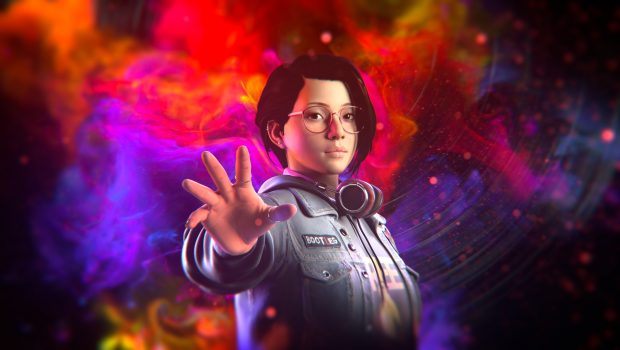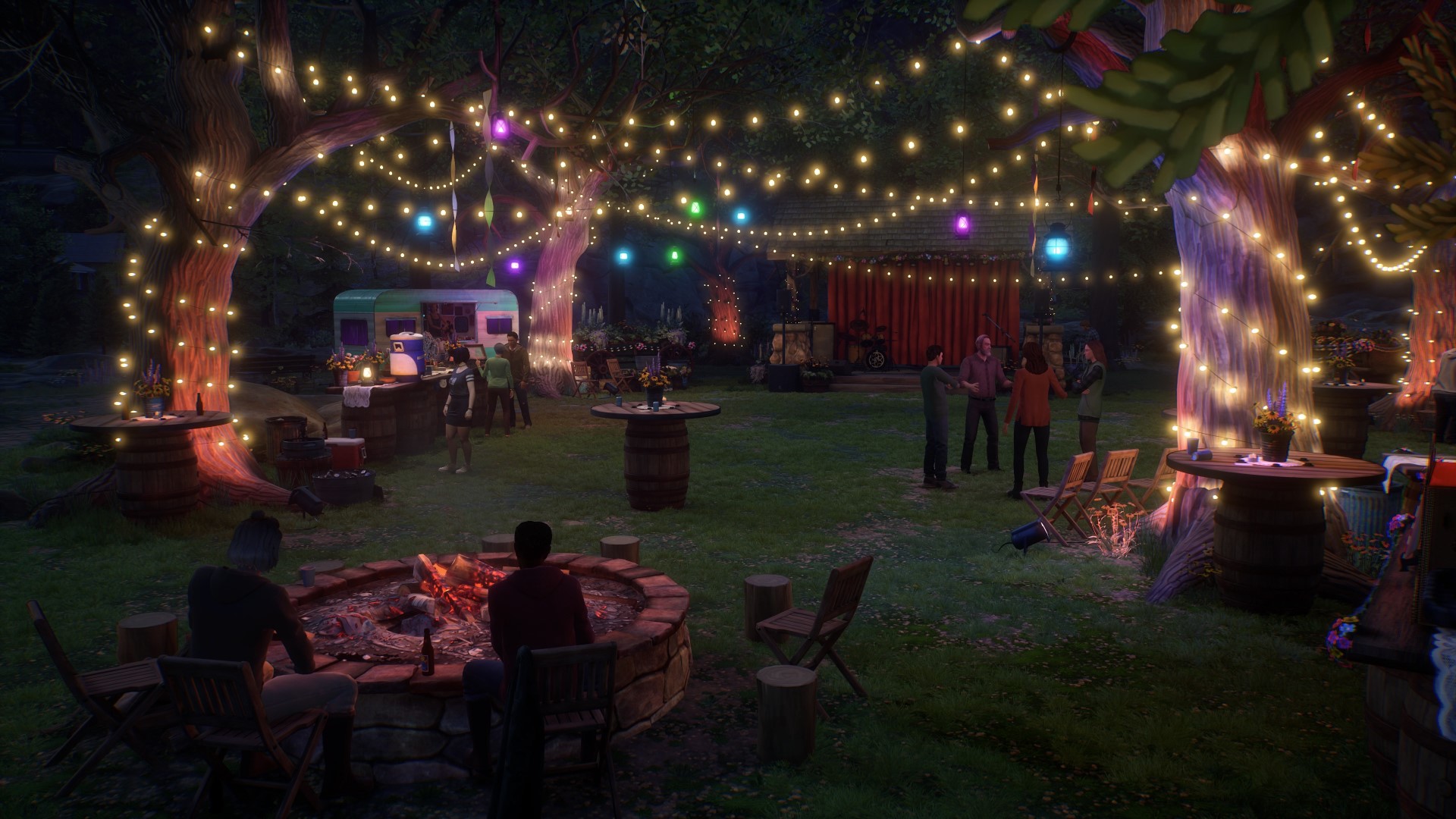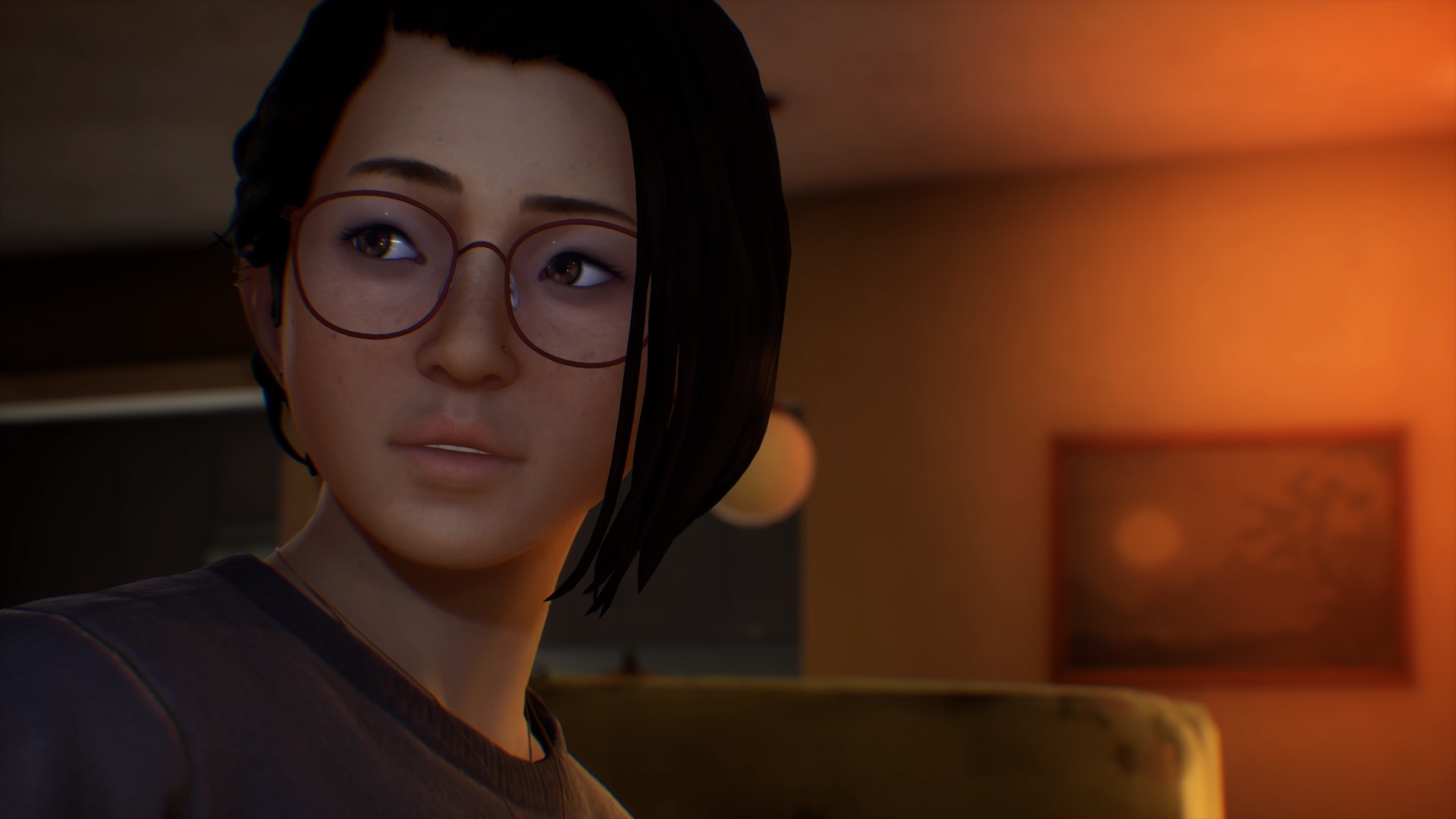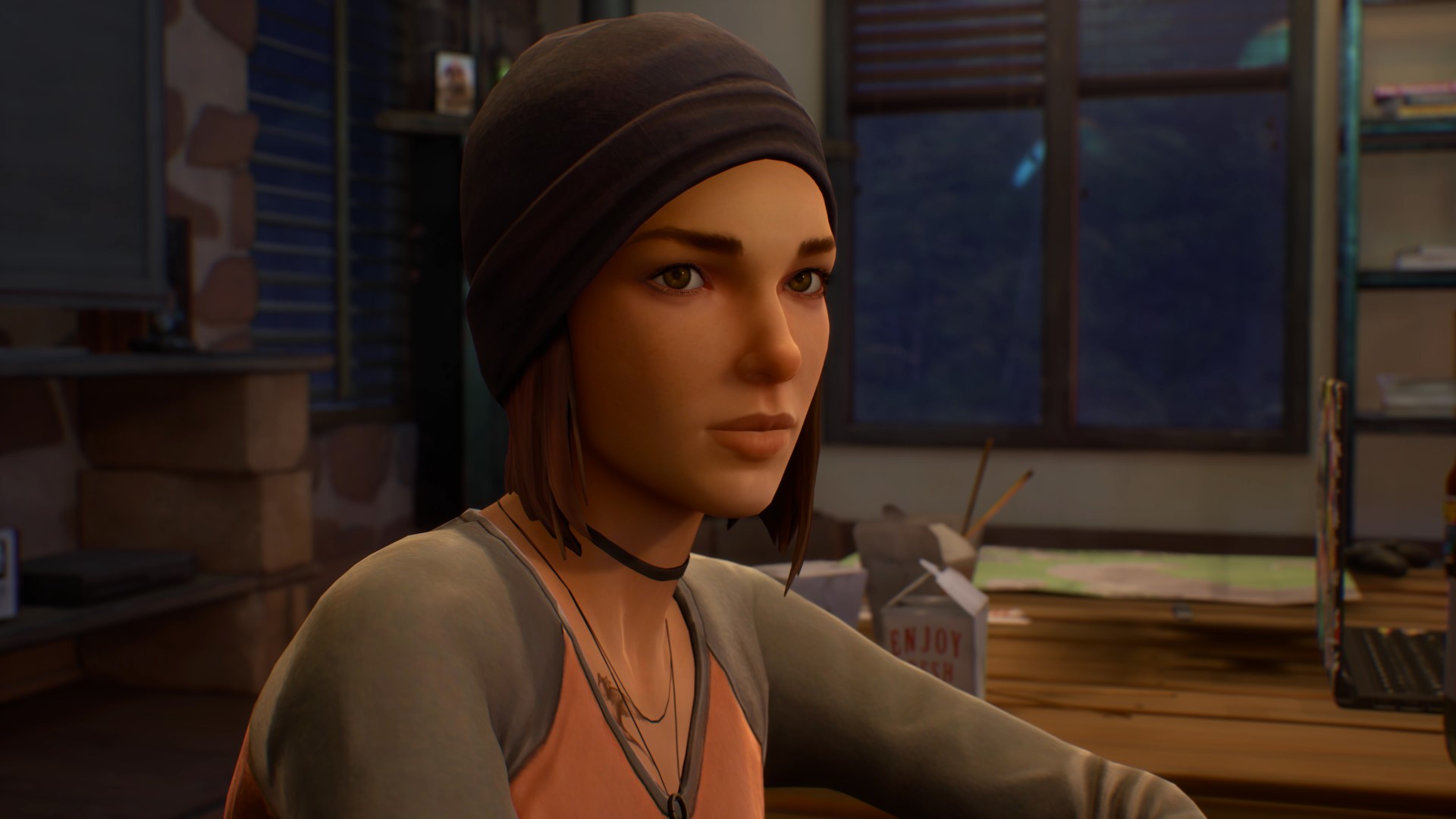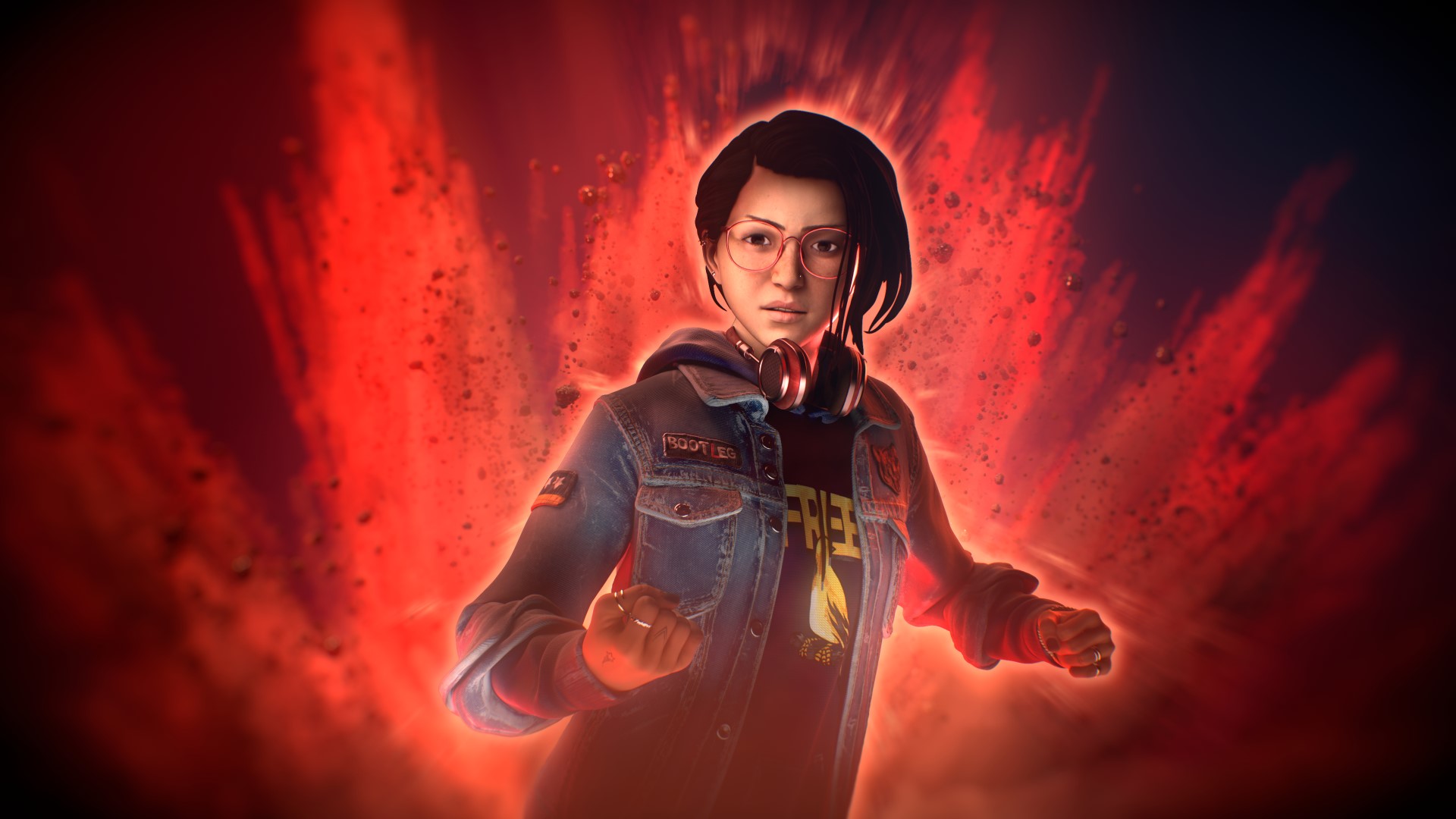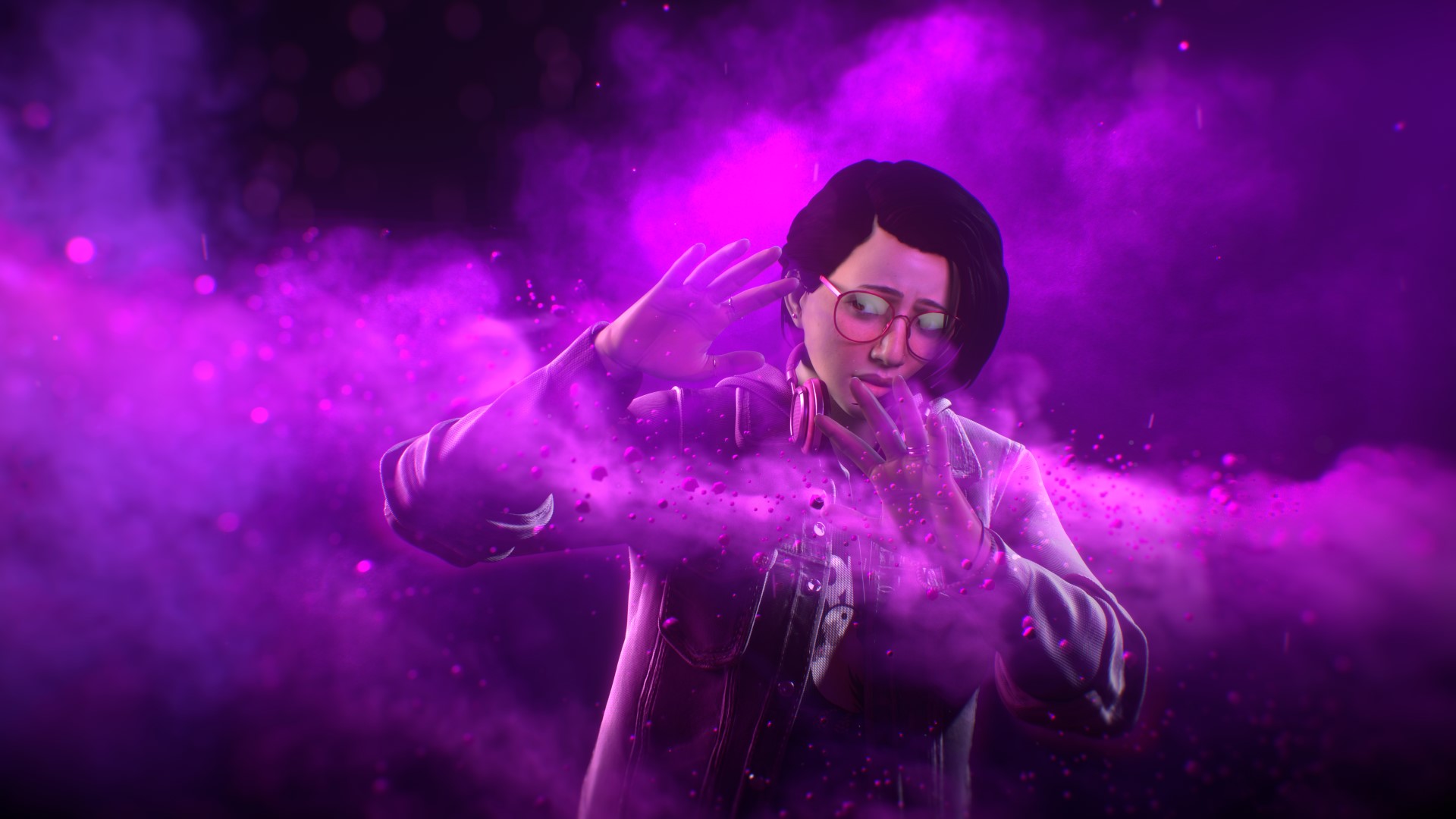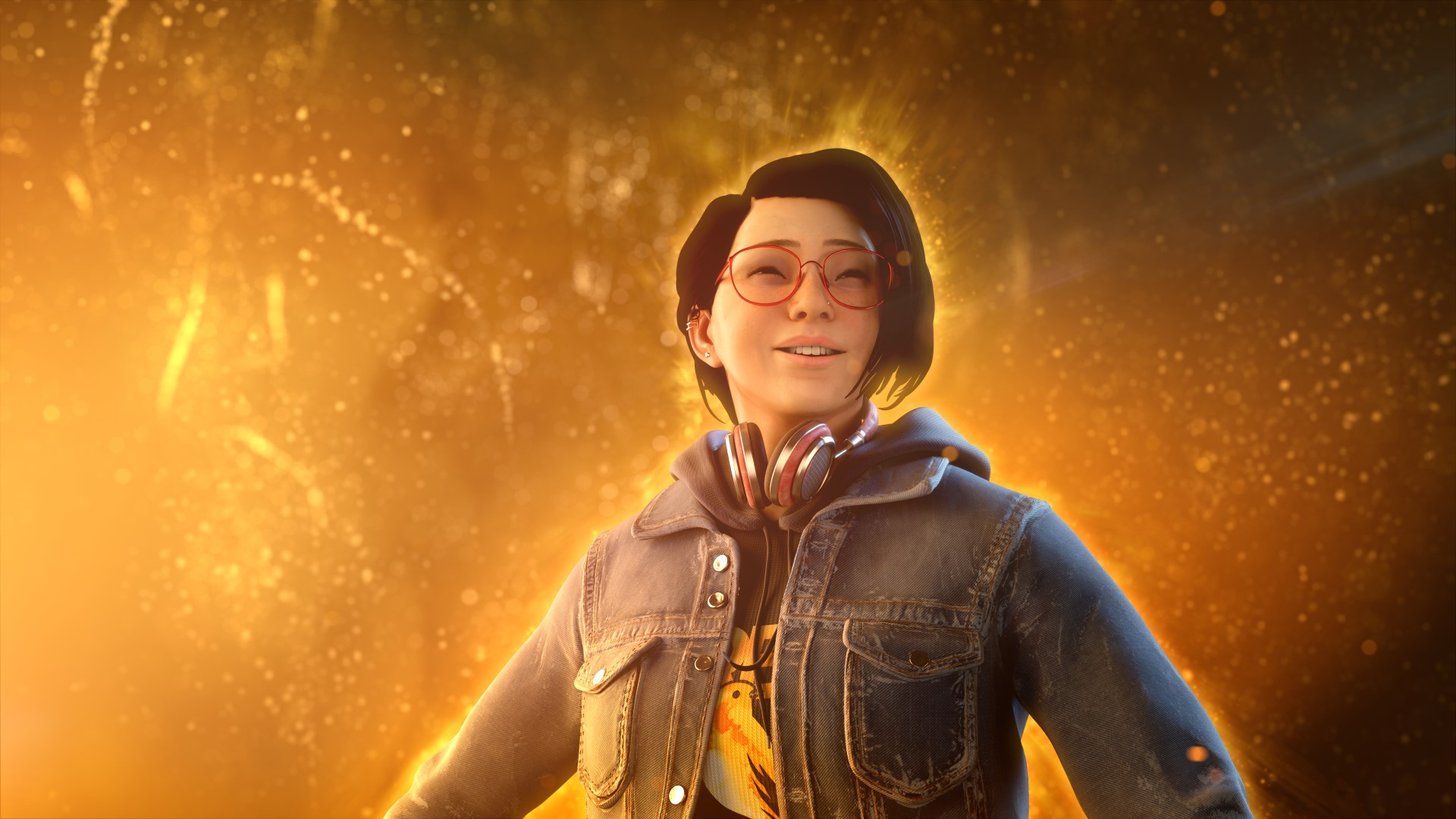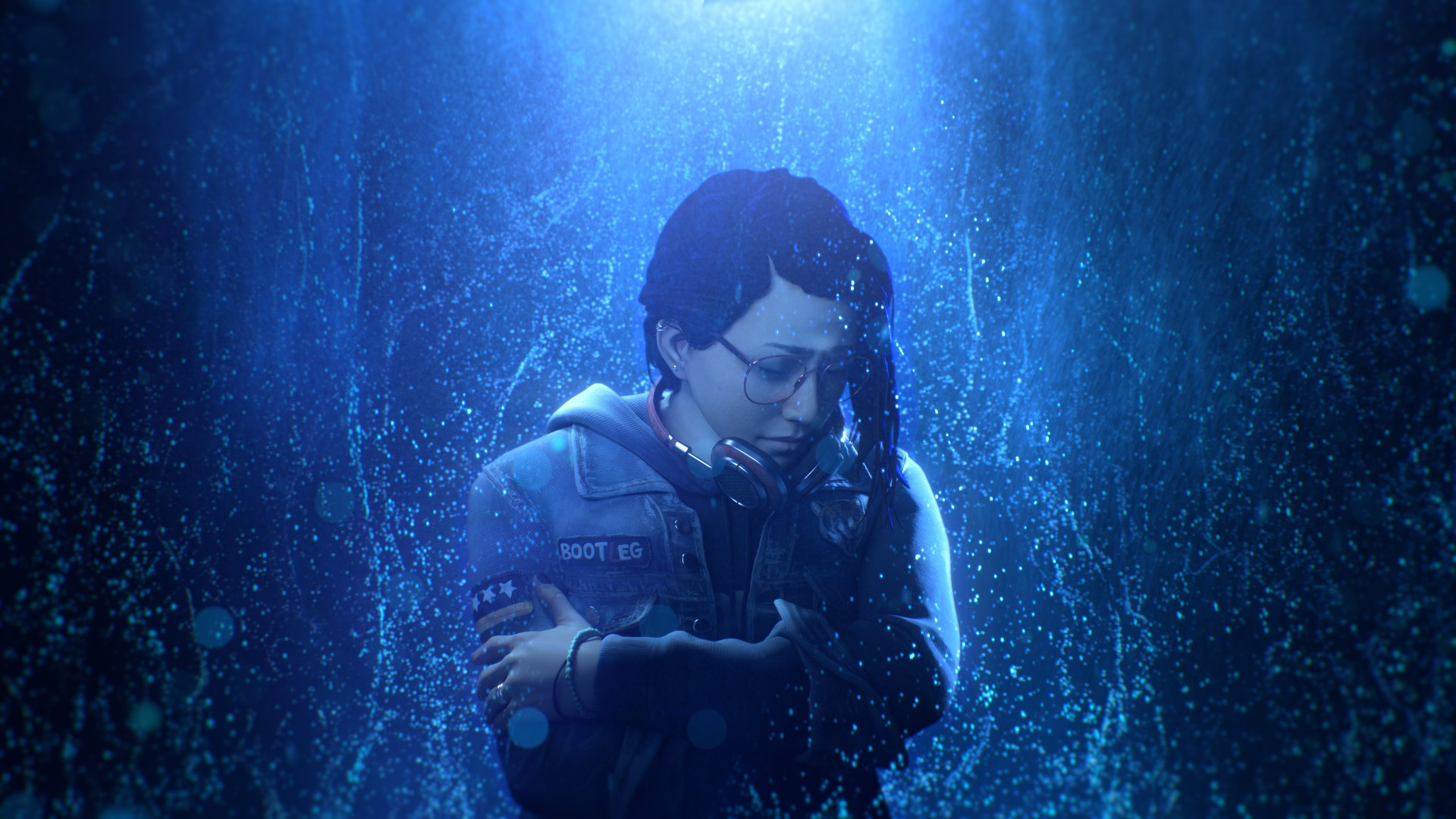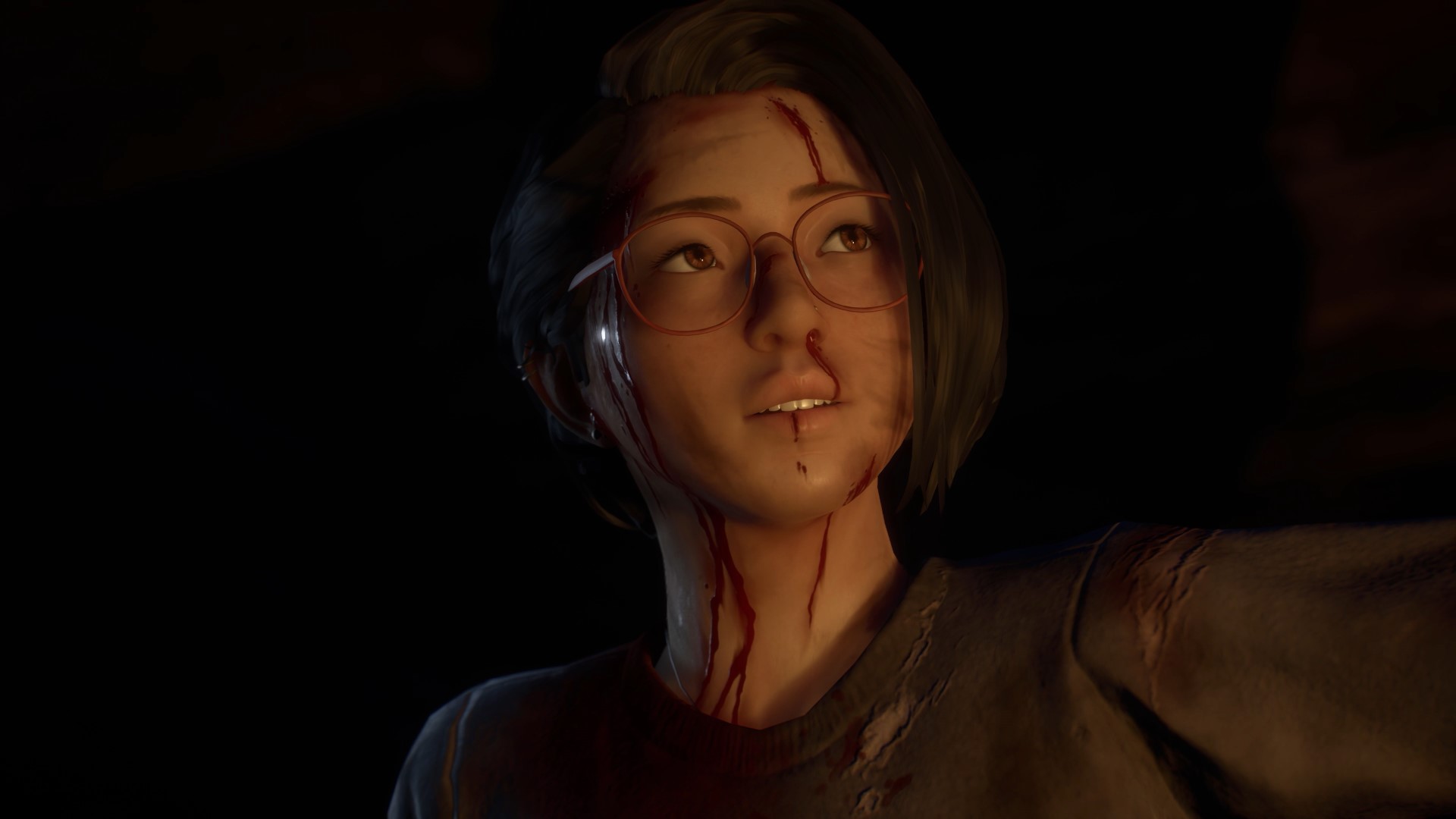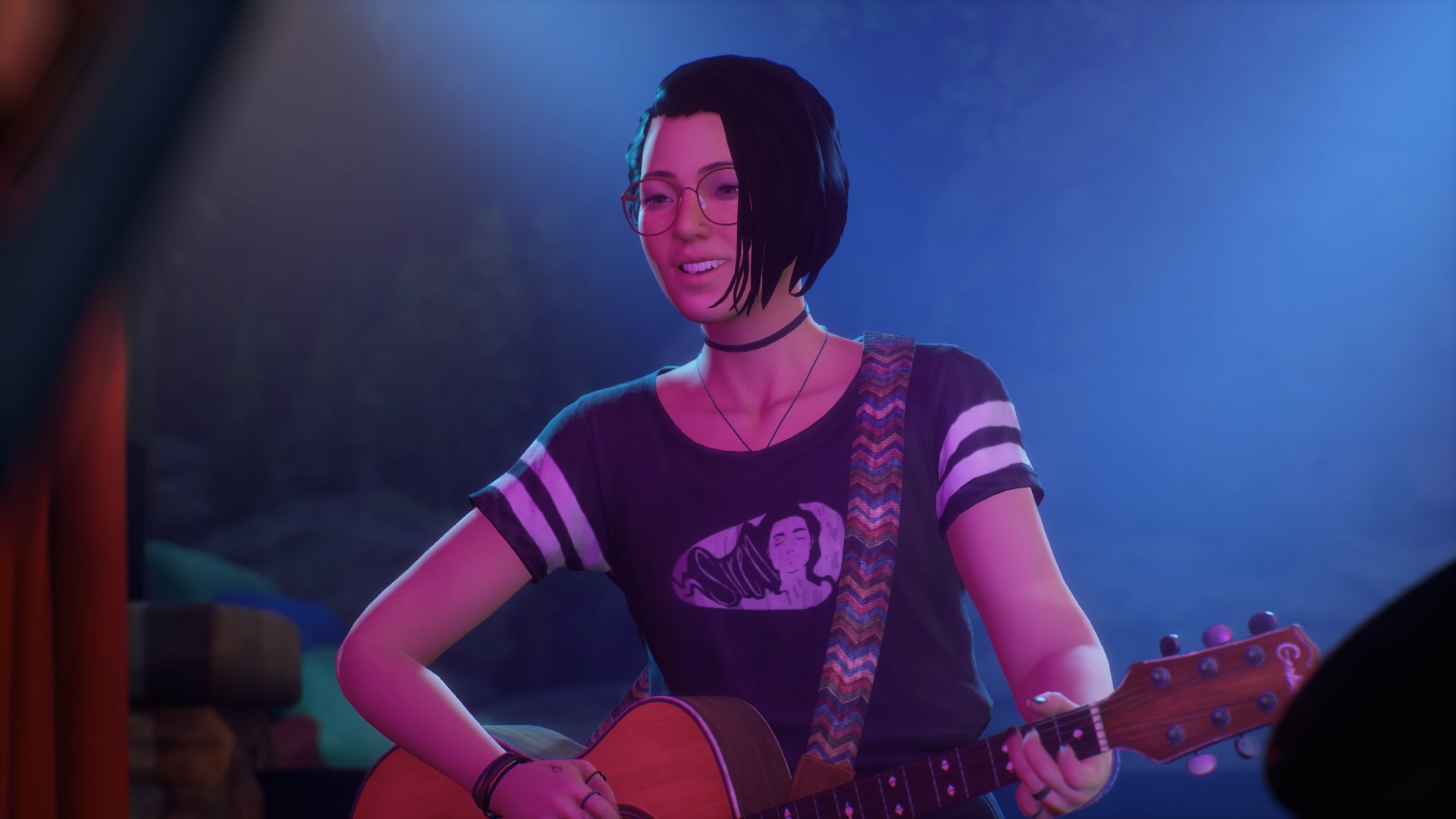Life is Strange True Colors Review #XBox
Alex Chen hides her ‘curse’: the psychic power of Empathy, the ability to absorb and manipulate the emotions of others. When her brother dies in a so-called accident, Alex must embrace her power to find the truth — and reveal secrets long-buried.
The Review
That’s right, it is time to look at the latest installment from Deck Nine and Square Enix in the Life is Strange franchise.
As per usual, Life is Strange focuses on a central protagonist story, where the choices the player makes can have profound consequences to how the story unfolds. True Colors continues this style with Alex Chen, the youngest child of the Chen family.
We are dealing with some serious themes here, which sadly are not too uncommon, but are nevertheless on the extreme side, especially in combination. Alex is the product of a broken home, the foster system and a tremendous sense of abandonment. This combination leads Alex down a dark path where there is the suggestion of mental illness as a consequence of her trauma, or perhaps the unique circumstances that lead to the development of her special gift.
Alex finds herself in Haven, Colorado, finally reconnecting with her brother Gabe and ageing out of the system that has kept her imprisoned for her entire adolescence. Suddenly she finds herself in the juxtaposition of being and feeling unwelcome, unwanted to suddenly being thrust upon a town of people that welcome her arms wide, including her brother who she has not seen or spoken to in as many years.
Alex turns detective, as she not only investigates a major crime that shook the town, she also uses her special abilities to help those around her deal with their emotions, as she also goes through a journey of self-discovery and growth, subject to the choices the player makes during key dialogue decisions.
In true Life is Strange fashion, there are twists and turns and multiple facets to the storyline. Symbolism, hints and obvious clues are throughout the game for any astute player to recognise, but of course the player must commit to searching, speaking and reading everything they can in order to spot them all. By the end of the game and when the full story is revealed, the player will connect all the dots and understand the elements of the story on a deeper level.
Game play
The developers at Deck Nine have made tremendous allowances to cater for any and all gamers, including people with vision impairments and audio-visual sensitivities. The player can select an altered versions of colouring for Alex’s aura and even invoke warnings prior to audible or visual events.
A new game will prompt the player to customise these settings, which of course can be skipped but the prompt is more of a presumption, which having already been made; most people will dive into the settings which will require the player to examine the settings and then leave everything as is. It is nice to see these settings and that Deck Nine thought enough to include these additional features, when many games do not. It is no small thing; this would have been quite a development concession.
Life is Strange continues its ‘point-and-click’ play style in True Colors which remains intuitive and easy for players to continue the franchise. The game hints and prompts inform the player which button to press and when, including the options for dialogue choices. This includes the use of the colours for the Xbox buttons to help with identification; all of which is by design and has the additional function of supporting players with different abilities, but also it just looks good.
Alex writes everything in her journal, including her feelings and thoughts about key interactions with the other characters. Unfortunately, unless you have a 100” TV, it can be very difficult to read, which is a shame because some of those notes may offer some insight and inform the decision making. Luckily there is no requirement to look at the journal in order to play True Colors, which would have otherwise been a show stopper, especially after all the game mechanics allowances that were already made.
Throughout the game, Alex must read signs, letters and objects, often these words are clearly visible, but if they are not or when there is more writing than what can be shown, the player can press “A” and read the full text. The presentation is a bit clustered and large amounts of text is poorly presented, making the writing uninviting and even difficult to read.
One of the game play mechanics is the time to respond to dialogue during conversations. Alex must respond within a certain amount of time or presumably a default option is chosen for her. The player can increase the time to respond in the settings, but on this play through, the default settings were in use. There was no detectable sense of urgency and each dialogue was entirely the choice chosen, except for one occasion; when attempting to answer a riddle, the default option was chosen immediately and it was clearly a bug preventing the correct response from being chosen – which was really annoying since the groundwork to identify the correct answer was done; nevertheless, it is unclear how this game mechanic will affect the player if more time is needed to consider the options.
The player cannot save the game at any stage, rather the game is automatically saved at key moments. It does mean that the player should settle in for the long haul, taking one chapter at a time or risk having to lose some progress when resuming. This also means that there is no ability to save a game and explore dialogue options!
There is also an inventory, which is not a tangible aspect of the game. Alex will store story items where practicable and required of the story, and the use of these items will be presented as a dialogue option. It also should be noted that the items that she obtains are actually items that a real person could physically carry and have on them. It would be very out of place in this game for Alex to carry all kinds of large objects in a boundless inventory.
It wouldn’t be a relevant game if there was not a constant use of a phone and social media, right? So naturally these elements are part of the game, where there is a constant back-channel of chatter from the NPC’s and Alex via text. This aspect of the game is a take-or-leave it kind of deal, and purely for emersion is it relevant.
It should be said, that Life is Strange: True Colors is perhaps one of the easiest and accommodating play styles of the RPG genre. Anyone can play this game and it is not limited or contingent upon any particular skillset.
Graphics
A lot of work has gone into character creation, including backstories, styling and wardrobe. Some of the characters are the very embodiment of what you would expect a town like Haven to be, especially in 2021.
Deck Nine have captured the idealistic Haven from all of our imaginations of what a nice town and community would look like. Picturesque mountains and miles of trees, surrounding log cabin architecture and mountain country style and charm.
Rather than a spattering of iconic and expected decor and obligatory objects, the town and key buildings are carefully thought out and each contain their own back story. It is clear from the high level of detail and quality, that the layout of the town is perhaps inspired by a real town or planned by a trained civil engineer.
The town incorporates a natural lake and river, elements of elevation and an inviting town square that sets the scene for almost the entire story.
The local bar, the Black Lantern, is brewing with the town’s local history, including signs about council meetings and plaques of local heroism, and even a wooden bear – hand carved by a local icon.
From a game play perspective, the graphics had moments of fluctuation on the Xbox that at times gave the impression that the graphics would be better on a PC; but rest assured the graphics are wonderful on the Xbox One. There were moments in this pre-release play through that shown a few graphical glitches but nothing that can’t be addressed.
There are some truly beautiful but not over-done cut scenes and ‘Zen moments’ that are really well done.
Emotional States
Anger
Fear
Joy
Sadness
Audio and voice acting
The voicing of the characters is of such a high quality, that it brings into question whether the cast were type-cast or plucked from a similar town. Of course, there are some scenes that were better than others and some voice actors that stood out above the rest.
Stephen Fuller Austin as Jed Lucan was outstanding, as was the devastatingly brilliant Ignacio Garcia-Canteli as Ethan Lambert. In fact, Ethan was so well played it was regrettable to not see more of this character.
Alex Chen was voiced by Erika Mori, and it was a solid performance. Although at times the performance came off a little dismissive or nonchalant where it perhaps shouldn’t have been so. Although that is a tough call to make as Alex could also initially be perceived as being indifferent, this just seemed jarring and didn’t fit at times. In context, if intended, then the delivery was spot on, but it just seemed to not fit.
Soundtrack
The soundtrack is also another understated aspect, although plays a larger part in True Colors than perhaps it would in other titles.
Music is used to enhance and punctuate specific elements and themes in the game, setting the mood or rather to indicate that the player should be feeling something. At times the music feels like an emotional queue card being held up to the player like a game show audience seeing an applause sign. But then there are other times when the music enhances the emotion and is very much in the background. At those times, the music is perfect.
It is a bold move to include some well known and obviously licensed tracks in this game. One such title is Creep by Radiohead, which was performed by Alex herself; and it must be said, was a pretty good version. Whether intended or not by the developers, Alex plays a G when she begins, which is fitting since the animation almost closely followed the correct chord progression for this song, and the guitarist in us, do like to see that level of accuracy.
The familiarity of these well-known and well-chosen titles certainly lifted the enjoyment factor up a notch and made the game feel more relevant to both a younger and older audience.
A deeper analysis
When we are introduced to Alex, we see a young woman being interviewed in a situation that she is clearly not wanting to be in. Looking deeper we see a chip on her shoulder, a sarcastic or disinterested and disrespectful non-verbal communication and responses to her therapist, somebody who, one would assume has been trying to help her for several years.
Alex is presented, without any further insight, as some kind of bratty rat-bag whom not only has a chip on her shoulder, but carries some sense of entitlement that is more than likely, not rightly deserved, a.k.a a stereotypical millennial.
Slowly we learn, through her own self-talk that she has endured some hard times and that she has been troubled; and will find relationships and people difficult. This is highly significant with respect to how the gameplay mechanics can be adjusted and catered for, in contrast to significant aspects of Alex’s identity.
Upon meeting her brother for the first time in years, Alex’s is presented with the option to hug or shake hands with her brother. This is the first choice that the player can make, which perhaps can redefine Alex’s character, from being socially awkward and uncomfortable with other people, incapable of easily recognising, expressing and controlling her emotions, or being able to as though the issues never existed.
But this first sign that that Alex’s character is flawed with respect to the games dialogue choices and her character progression is the first of several confounding issues.
The non-verbal communication of Alex in that first scene with her brother Gabe, indicates that despite overcoming her emotional discomfort at a physical expression, she is still visually uncomfortable, which reinforces the notion to the player that Alex is not comfortable with the choice and ultimately it feels unwanted and unnatural. It is at this moment, that the player is either reflecting their own personal issues or choices onto Alex or reinforcing Alex’s emotional issues and stifling her growth as a character.
Despite this, it simply does not fit from a gameplay perspective. Sure, a hug during this interaction is perfectly normal and expected in most circumstances, but it didn’t land, as was evident of Alex’s non verbals and scrunching her face and wincing a little bit.
There are two romantic options available to Alex, and although both can be avoided, Alex will keep pushing the subject in her self-talk, so it is almost unavoidable. But taking a look at both options, it is rather evident that there is a preferred option and a required-reading option. The preferred option is Steph, who by all accounts is the most enduring characters in the story. She is truly amazing, a musician, a local icon, pretty and hilarious.
Steph makes a play for Alex pretty early on in the piece and the non-verbals from Alex is the equivalent that this is the correct path for the player. There seems to also be at least three times more opportunities to speak with and flirt with Steph in comparison to the heterosexual option Ryan Lucan.
Ryan is at first, the average meterosexual mountain man with the obligatory beard; but he is soft-spoken, non-authoritative, docile and a timid man whom will happily take a back seat in any social setting and makes absolutely no overture of significance towards Alex. To put it simply, Ryan is the new-wave feminist archetype of a male and is not intended to be a preferable option, especially when all of the non-verbals for the flirtation and romance scene between Alex and Ryan seem apathetic and only border on mediocre.
Then there is the rather poignant theme of marijuana and it’s use throughout the game. The apothecary which is entirely a pot-store, is one of the major elements of the game, with one of the primary characters as the shopkeeper and all characters being significantly connected to it in some way.
The decision to include this element at all, is not edgy or breakthrough, instead it is odd and unnecessary. The type of store and its product is not contingent upon telling the story, developing Alex’s character, enhancing her character or even highlighting any moral aspect whatsoever. In True Colors, the impression is given that the entire town are habitual cannabis users, whom all welcome the shop with open arms, despite there being prohibition and laws against it until it was legalised in 2012. This isn’t a tough sell; it is just unbelievable; yeah we ain’t buyin’ what yo’ sellin’.
Alex has been in a government run group home for her entire teenage life, and the conclusion that can only be drawn is that she developed a pot habit during that time or decided to pick it up immediately upon arrival into town. This is further bizarre when examining the text messages and social media posts about the subject from her and the townsfolk. The fact is that the apothecary would have been far better placed to be a gift shop, which would have fitted into the artist narrative more closely than a pot store.
There is also no moral objection by any character to the use of pot, nobody opting out, no warnings within the store about abuse, no lessons from Alex’s use, nothing. Nope, the decision to include this significant pot reference is divisive and alienating for half the audience, irresponsible in its celebration and lack both sides of the divisive topic; and worst of all, it is really bad story telling.
It is very difficult to have any appreciation and buy in for Alex’s character in the first half of the game, simply because the lack of back story, the contradiction between her non-verbals and dialogue choices, her overall chip-on-shoulder brattiness and most importantly, her superpowers that, as the audience, we cannot see any heroic arc. How has she suffered, what has she gone through to earn this power?
Unfortunately, but not unexpectedly, Alex’s character lends more to the now well-worn trope of a bisexual/lesbian praiseworthy girl, who is all powerful, all deserving and loved by all without challenge or trial. Everything is handed to her by virtue of her identity; and morality and her decision making is purely subject to how she feels at the time.
Final thoughts
Life is Strange: True Colors is difficult to place. On the upside the bones of this game are fairly good, the game play is mostly great and there are some elements to this game that are really creative and outright cool.
True Colors ebbs and flows from great game play and cinematic enjoyment, to deep lulls that neutralise any and all gains.
If you were to separate Alex from the story, the elements of a good story are there, albeit rather dramatic, but the negative aspects of Alex’s character in the first half of the story, ultimately make this game feel like a half-baked woke hash-cookie.
It was difficult to be sufficiently motivated to play the first three chapters of this game, because Alex’s apathetic persona and slow storytelling, coupled with some obvious busy-work was simply not as enjoyable as the developers may have intended.
Ironically, what was perhaps intended for Alex, to be a strong female character, was instead tarnished by weaker storytelling choices and overlooked character flaws; whereas the most inspirational and enjoyable strong female characters was actually Steph. It would have been a far greater story if perhaps told from her perspective or perhaps if Alex imbued a sense of accomplishment that the audience could identify with, other than being a perpetual victim with special powers.
It is inescapable that the primary elements displayed in this game, the straw-man emasculated Ryan, the over-emphasised Steph, and previously mentioned flaws with Alex, coupled with the strong emphasis on the marijuana which has no real baring on the story, is a demonstration of a specific agenda, which has ultimately weakened the story.
Life is Strange: True Colors, appears to be a game that is designed in all respects, for a subset minority of gamers, where goals of inclusivity have the undue effect of weakening the experience and demonstrating a lack of respect for the audience’s intelligence.
Life is Strange: True Colors, was more enjoyable towards the latter half of the story and ultimately it is still a worthwhile play, however it is not a game that you will want to play twice.
Trailer
.
Summary: Life is Strange: True Colors ebbs and flows from great game play and cinematic enjoyment, to deep lulls that neutralise any and all gains.


